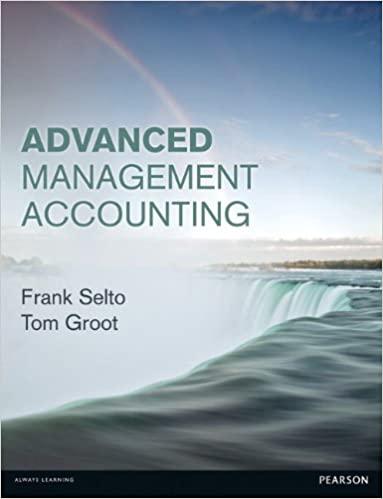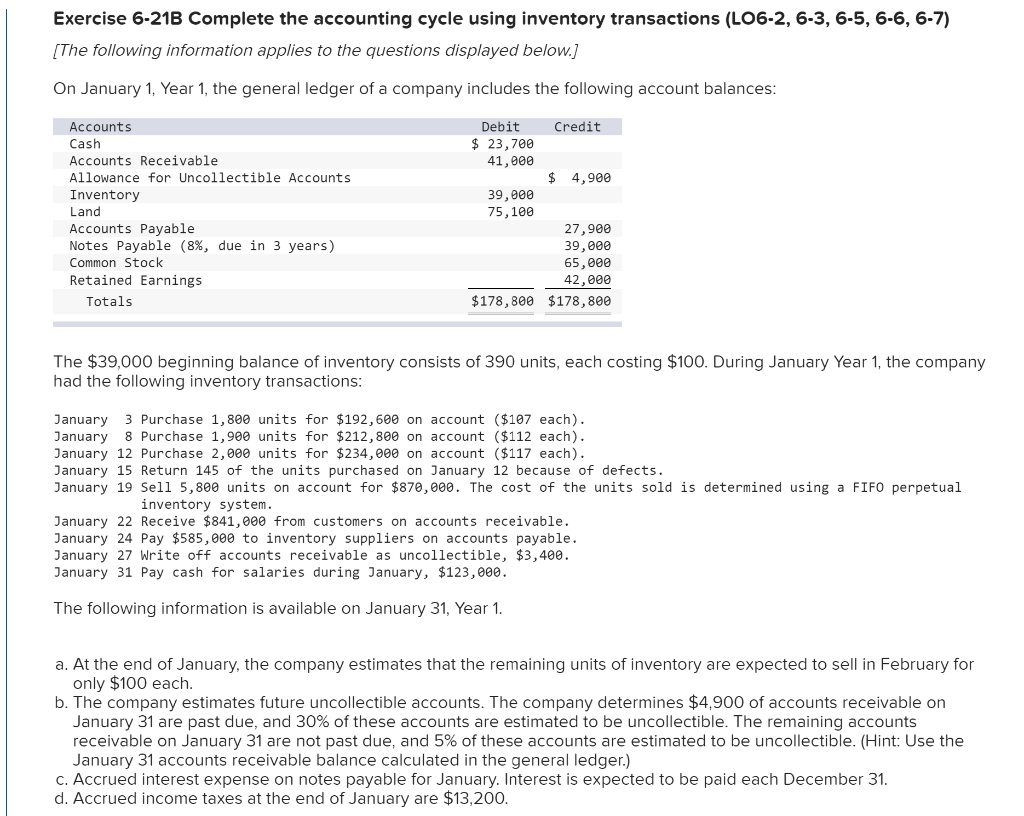
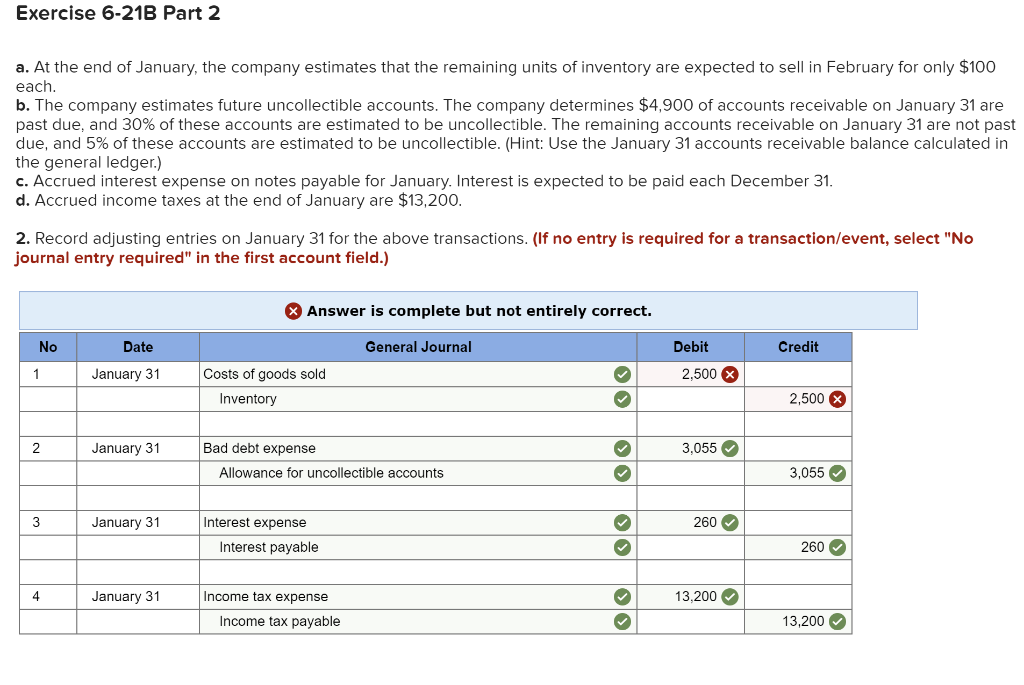

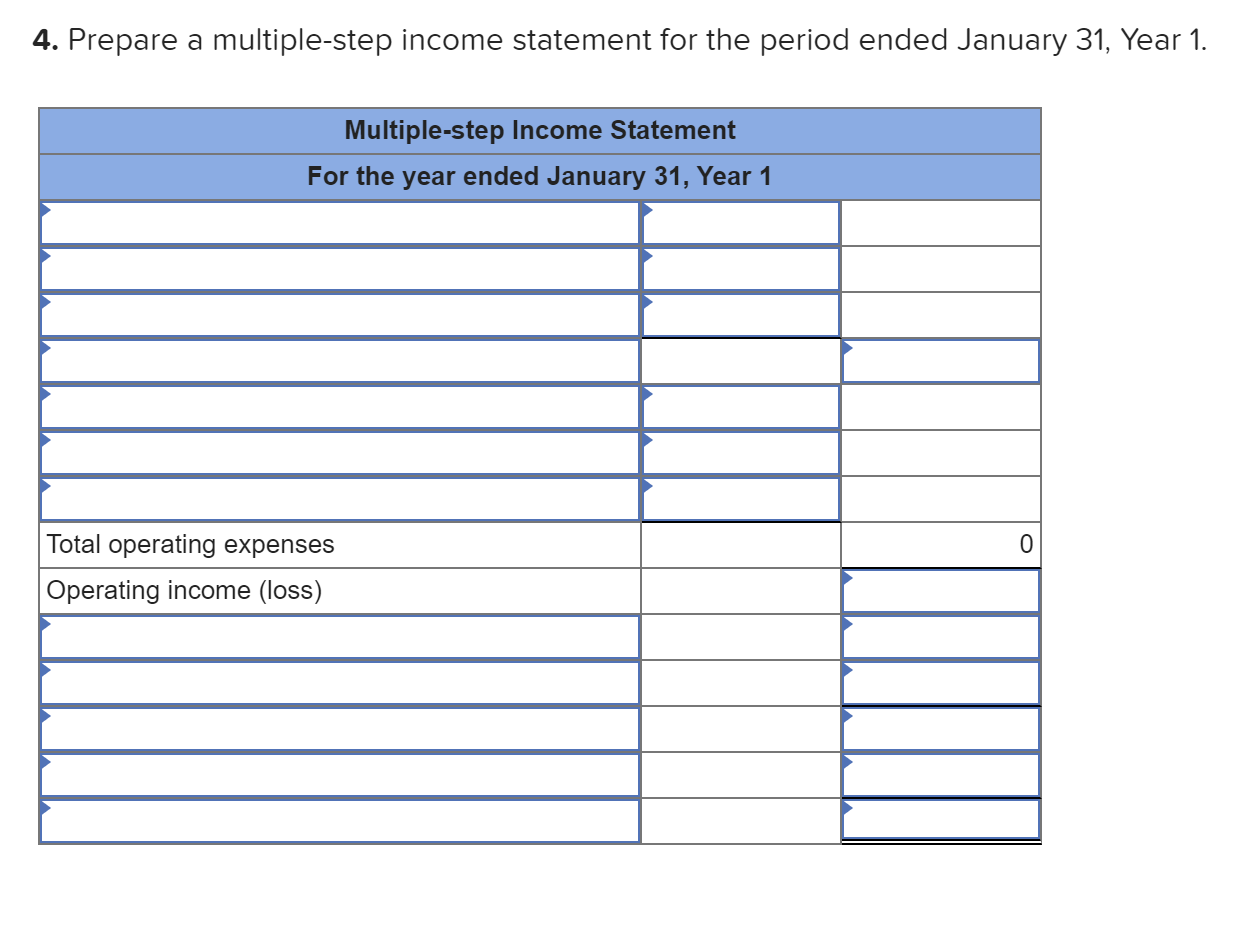
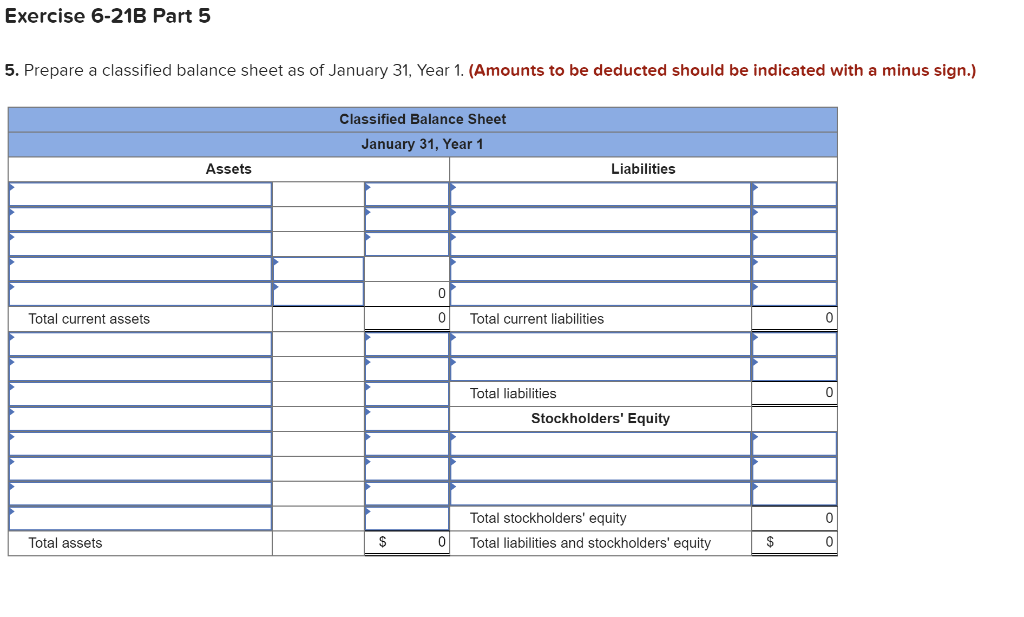
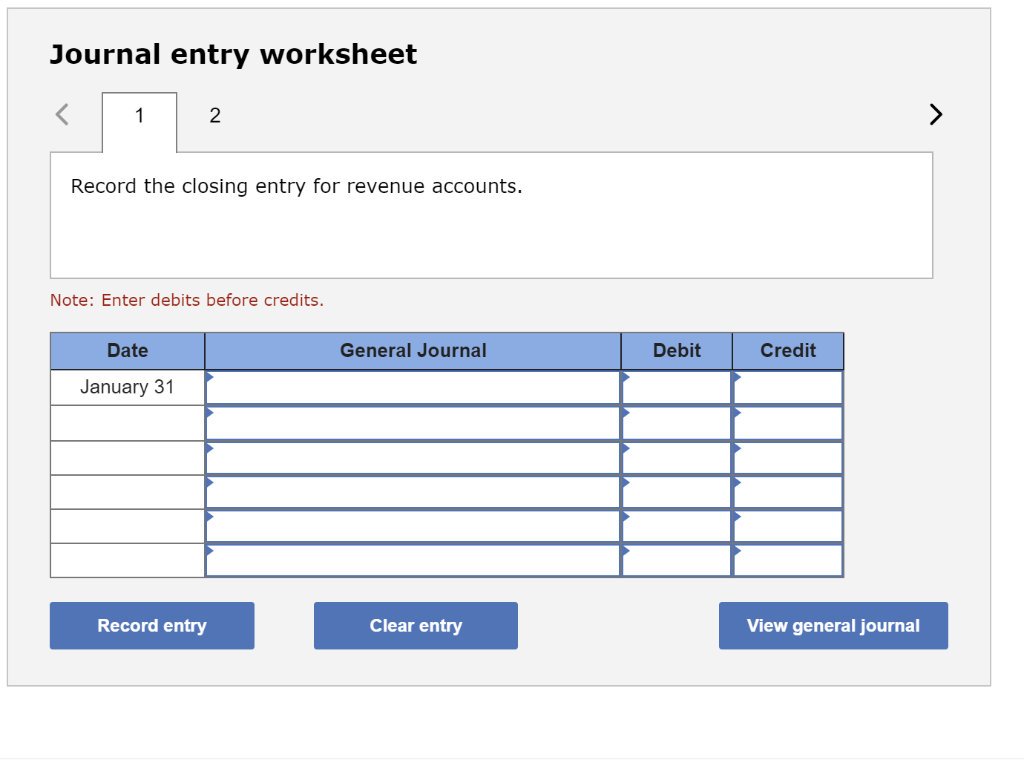
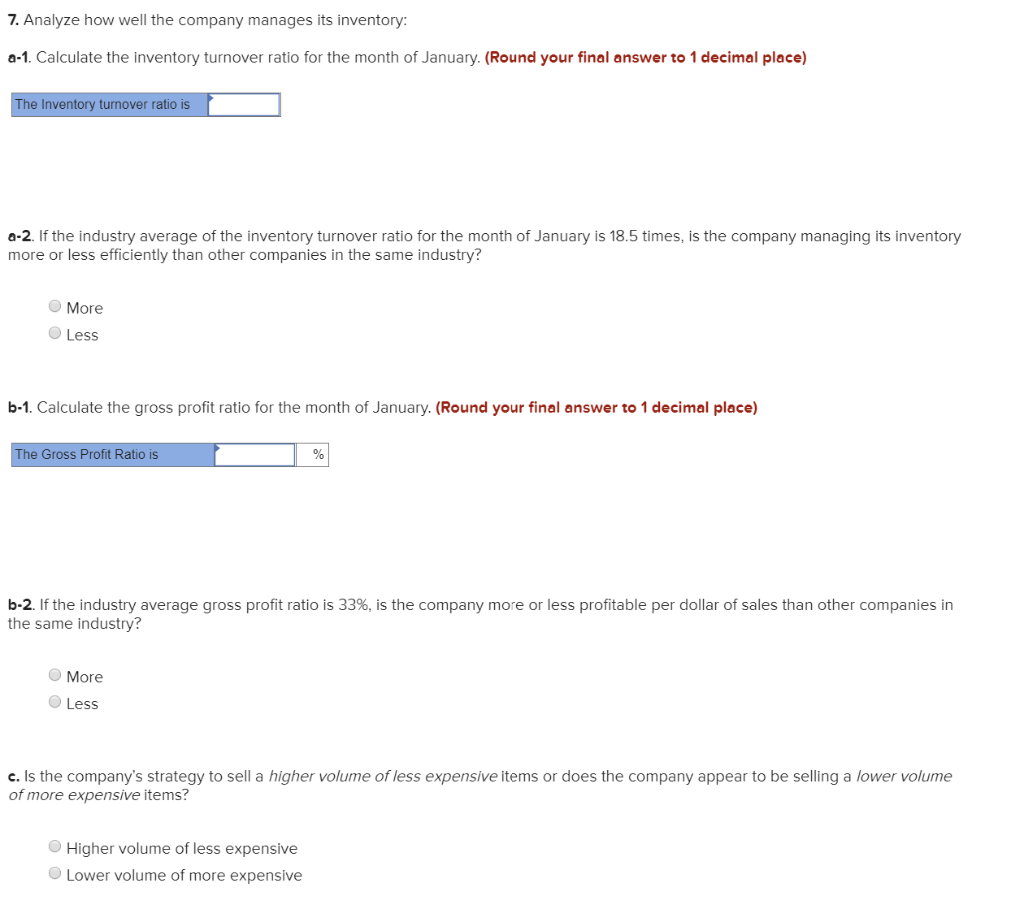
Exercise 6-21B Complete the accounting cycle using inventory transactions (LO6-2, 6-3, 6-5, 6-6, 6-7) [The following information applies to the questions displayed below.] On January 1, Year 1, the general ledger of a company includes the following account balances: Accounts Cash Accounts Receivable Allowance for Uncollectible Accounts Inventory Land Accounts Payable Notes Payable (8%, due in 3 years) Common Stock Retained Earnings Totals Debit Credit $ 23,700 41,000 $ 4.900 39,000 75, 100 27,900 39,000 65,000 42,000 $178,800 $178,800 The $39,000 beginning balance of inventory consists of 390 units, each costing $100. During January Year 1, the company had the following inventory transactions: January 3 Purchase 1,800 units for $192,600 on account ($107 each). January 8 Purchase 1,900 units for $212,800 on account ($112 each). January 12 Purchase 2,000 units for $234,000 on account ($117 each). January 15 Return 145 of the units purchased on January 12 because of defects. January 19 Sell 5,800 units on account for $870,000. The cost of the units sold is determined using a FIFO perpetual inventory system. January 22 Receive $841,000 from customers on accounts receivable. January 24 Pay $585,000 to inventory suppliers on accounts payable. January 27 Write off accounts receivable as uncollectible, $3,400. January 31 Pay cash for salaries during January, $123,000. The following information is available on January 31, Year 1. a. At the end of January, the company estimates that the remaining units of inventory are expected to sell in February for only $100 each. b. The company estimates future uncollectible accounts. The company determines $4,900 of accounts receivable on January 31 are past due, and 30% of these accounts are estimated to be uncollectible. The remaining accounts receivable on January 31 are not past due, and 5% of these accounts are estimated to be uncollectible. (Hint: Use the January 31 accounts receivable balance calculated in the general ledger.) C. Accrued interest expense on notes payable for January. Interest is expected to be paid each December 31. d. Accrued income taxes at the end of January are $13,200. Exercise 6-21B Part 2 a. At the end of January, the company estimates that the remaining units of inventory are expected to sell in February for only $100 each. b. The company estimates future uncollectible accounts. The company determines $4,900 of accounts receivable on January 31 are past due, and 30% of these accounts are estimated to be uncollectible. The remaining accounts receivable on January 31 are not past due, and 5% of these accounts are estimated to be uncollectible. (Hint: Use the January 31 accounts receivable balance calculated in the general ledger.) c. Accrued interest expense on notes payable for January. Interest is expected to be paid each December 31. d. Accrued income taxes at the end of January are $13,200. 2. Record adjusting entries on January 31 for the above transactions. (If no entry is required for a transaction/event, select "No journal entry required" in the first account field.) No * Answer is complete but not entirely correct. General Journal Costs of goods sold Inventory Date January 31 Credit Debit 2,500 1 2,500 January 31 3,055 Bad debt expense Allowance for uncollectible accounts 3,055 3 January 31 260 Interest expense Interest payable 260 January 31 13,200 Income tax expense Income tax payable 13,200 Exercise 6-21B Part 3 a. At the end of January, the company estimates that the remaining units of inventory are expected to sell in February for only $100 each. b. At the end of January, $4,900 of accounts receivable are past due, and the company estimates that 30% of these accounts will not be collected. Of the remaining accounts receivable, the company estimates that 5% will not be collected. c. Accrued interest expense on notes payable for January. Interest is expected to be paid each December 31. d. Accrued income taxes at the end of January are $13,200. 3. Prepare an adjusted trial balance as of January 31, Year 1. Answer is not complete. Credit Adjusted Trial Balance January 31, Year 1 Accounts Debit Cash $ 156,700 Accounts receivable 66,600 Allowance for uncollectible accounts Inventory 17,316 X Land 75,100 Accounts payable 4,555 65,686 X 4. Prepare a multiple-step income statement for the period ended January 31, Year 1. Multiple-step Income Statement For the year ended January 31, Year 1 Total operating expenses Operating income (loss) Exercise 6-21B Part 5 5. Prepare a classified balance sheet as of January 31, Year 1. (Amounts to be deducted should be indicated with a minus sign.) Classified Balance Sheet January 31, Year 1 Assets Liabilities 0 0 Total current assets Total current liabilities Total liabilities Stockholders' Equity Total stockholders' equity Total liabilities and stockholders' equity Total assets $ 0 $ Journal entry worksheet Record the closing entry for revenue accounts. Note: Enter debits before credits. Date General Journal Debit Credit January 31 Record entry Clear entry View general journal 7. Analyze how well the company manages its inventory: a-1. Calculate the inventory turnover ratio for the month of January. (Round your final answer to 1 decimal place) The Inventory turnover ratio is a-2. If the industry average of the inventory turnover ratio for the month of January is 18.5 times, is the company managing its inventory more or less efficiently than other companies in the same industry? More Less b-1. Calculate the gross profit ratio for the month of January. (Round your final answer to 1 decimal place) The Gross Profit Ratio is b-2. If the industry average gross profit ratio is 33%, is the company more or less profitable per dollar of sales than other companies in the same industry? More Less c. Is the company's strategy to sell a higher volume of less expensive items or does the company appear to be selling a lower volume of more expensive items? Higher volume of less expensive Lower volume of more expensive













